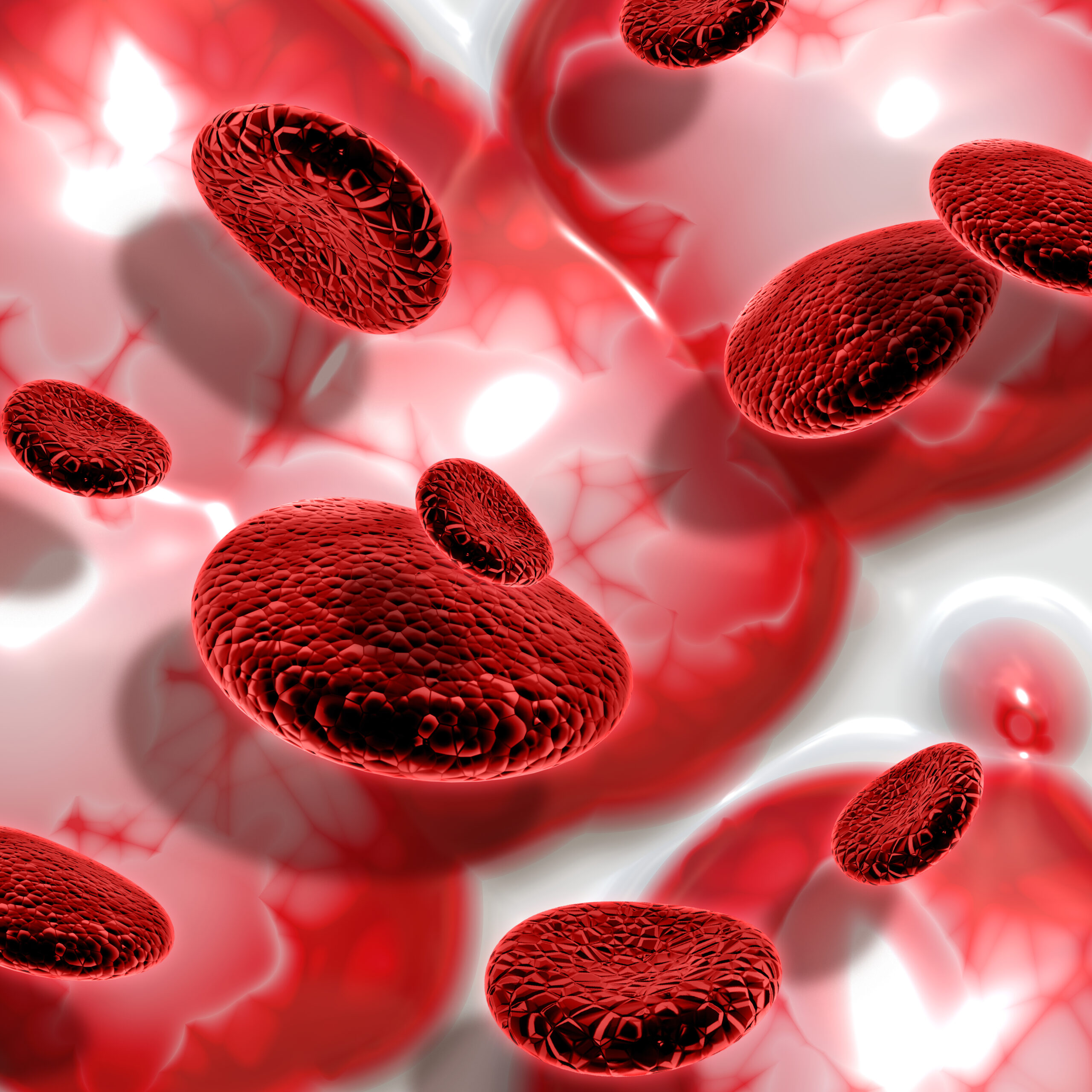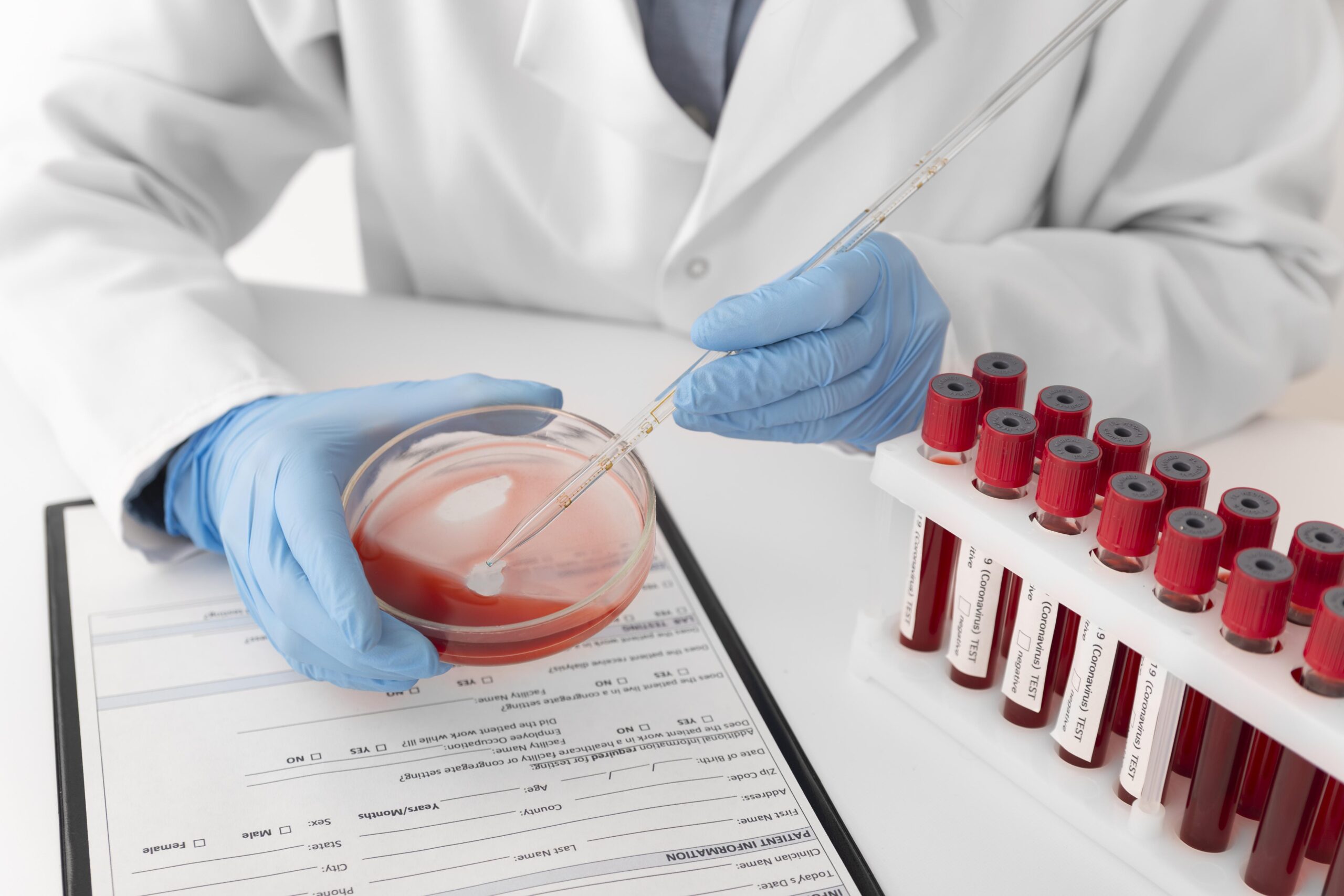Leukemia is a malignant tumor that affects the circulatory system. The number of individual blood elements changes in sick people, especially white blood cells. There are too many of them, and they stop doing their job, which leads to disturbances in the functioning of the entire body.
Since the disease may have different courses, the following division is used:
The most common diagnosis in adults is acute myeloid leukemia. However, acute lymphoblastic leukemia predominates in children.
Leukemia![]() is a group of cancers of the hematopoietic system that can affect people of any age. The causes of leukemia
is a group of cancers of the hematopoietic system that can affect people of any age. The causes of leukemia![]() can concern a DNA mutation within the stem or precursor cell of the bone marrow. As a result, defective cells multiply uncontrollably, destroy normal cells in the bloodstream, and attack organs. The composition of the blood is disturbed (immature white blood cells dominate, displacing normal cells), which means that it does not fulfill its functions.
can concern a DNA mutation within the stem or precursor cell of the bone marrow. As a result, defective cells multiply uncontrollably, destroy normal cells in the bloodstream, and attack organs. The composition of the blood is disturbed (immature white blood cells dominate, displacing normal cells), which means that it does not fulfill its functions.

However, the question remains: what causes modifications in the genetic code of these cells? The mutations concern the genes encoding the p53 protein. The p53 protein![]() eliminates cells that have undergone cancer transformation. In people with leukemia, it is often mutated, so it does not fully perform its functions and does not remove defective cells.
eliminates cells that have undergone cancer transformation. In people with leukemia, it is often mutated, so it does not fully perform its functions and does not remove defective cells.
The causes of leukemia have not been fully investigated. That is why it is challenging to provide a specific background that leads to the development of the disease. However, it is possible to outline the predisposing factors whose presence may contribute to the occurrence of the disease:
All the factors mentioned above can lead to the formation of genetic mutations in stem cells, from which subsequent cells are derived. In this way, a cancer (e.g., leukemia) stem cell appears, which gives rise to the leukemia cell line – blast cells.
If the immune system, which responds to unusual cell structures, is weakened by the disease, it does not recognize pathological, mutated cells and cannot defend itself against them. Cancer cells begin growing uncontrollably, destroying healthy cells necessary for the body.
As a result of further multiplication of leukemic cells, anemia, thrombocytopenia, enlargement of lymph nodes and spleen, infections, fever, headaches, bones, and joints, as well as general weakness of the body occur. The further stages of leukemia vary depending on its type.
Usually, the first symptoms of leukemia![]() resemble an infection. A sick person may notice:
resemble an infection. A sick person may notice:
As the disease progresses, other ailments also appear: petechiae on the skin, mouth ulcers, frequent bleeding from the nose and gums, profuse sweating (especially at night), a severe weakening of immunity, and the associated increased susceptibility to viral bacterial and fungal infections.
Leukemia in children and adults can also cause ailments in individual organs if abnormal blood cells enter them – for example, neurological symptoms are often observed.
Some leukemias may cause skin symptoms![]() . They usually occur in chronic lymphocytic leukemia, which is the most common type of leukemia in Europe. Characteristic symptoms include enlarged lymph nodes, fatigue, night sweats, and weight loss.
. They usually occur in chronic lymphocytic leukemia, which is the most common type of leukemia in Europe. Characteristic symptoms include enlarged lymph nodes, fatigue, night sweats, and weight loss.
When it comes to skin symptoms related to different types of leukemia, you may experience breakouts, inflammatory lesions, and bothersome itching. Other probabilities of symptoms include petechiae, bloody spots, and nodular subcutaneous infiltrates. In the course of the disease and the progressive decline in immunity, sometimes even mycosis or an itchy rash resembling shingles may appear.
What are the symptoms of leukemia in adults and children? Are there any noticeable differences in the course of the disease?
The symptoms of leukemia in adults are similar to those in children. Anemia, pale skin, exertional dyspnea, and dizziness are common. The lymph nodes, liver, and spleen may also enlarge. Due to the decrease in the body's immunity, canker sores, herpes, ulcers, and tonsillitis occur.
Acute leukemias predominate in children![]() – most often, acute lymphoblastic leukemia occurs in patients under 15 years of age. Symptoms of leukemia in children are related to anemia, which results in pale skin and mucous membranes, weakness, and fatigue. Skin symptoms of leukemia may appear, such as red spots, bruises, or bleeding diathesis resulting from impaired blood clotting processes. There is greater susceptibility to infections, lymph nodes enlarge, fever, and bone and joint pain are common.
– most often, acute lymphoblastic leukemia occurs in patients under 15 years of age. Symptoms of leukemia in children are related to anemia, which results in pale skin and mucous membranes, weakness, and fatigue. Skin symptoms of leukemia may appear, such as red spots, bruises, or bleeding diathesis resulting from impaired blood clotting processes. There is greater susceptibility to infections, lymph nodes enlarge, fever, and bone and joint pain are common.
Regarding leukemia diagnosis![]() , time plays a huge role – the sooner the patient is diagnosed, the sooner appropriate treatment can be implemented. Fast and efficient diagnosis is particularly significant in the case of acute leukemia, in which only a few weeks may pass from the appearance of the first symptoms to the development of a full-blown, life-threatening disease.
, time plays a huge role – the sooner the patient is diagnosed, the sooner appropriate treatment can be implemented. Fast and efficient diagnosis is particularly significant in the case of acute leukemia, in which only a few weeks may pass from the appearance of the first symptoms to the development of a full-blown, life-threatening disease.
The basic tests recommended if leukemia is suspected include:

If, after basic tests, the patient is suspected of having acute leukemia or chronic myeloid leukemia, it is necessary to perform specialized tests, including a bone marrow biopsy, most often from the sternum. The suspicion of chronic lymphocytic leukemia can only be confirmed by a blood test, although it may turn out that bone marrow sampling will also be necessary. The results and material obtained in this way are subjected to highly specialized tests:
One of the most effective ways to fully cure leukemia is to transplant bone marrow![]() /hematopoietic stem cells
/hematopoietic stem cells![]() from a compatible donor. Depending on the type of leukemia, doctors choose the most optimal therapeutic option. Typically, treatment begins with chemotherapy and/or radiotherapy, which may result in complete or partial disease remission.
from a compatible donor. Depending on the type of leukemia, doctors choose the most optimal therapeutic option. Typically, treatment begins with chemotherapy and/or radiotherapy, which may result in complete or partial disease remission.
Then, depending on the effectiveness of the treatment and the risk factors for disease recurrence, bone marrow transplantation is planned. However, bone marrow transplantation is not possible in every patient. If the patient is qualified for such a treatment method, the next challenge is to find a compatible donor. Only some patients find a compatible donor among family members (primarily siblings). For the remaining patients, it is necessary to find an unrelated donor. That is why it is so important to register in the bone marrow donor database to increase the chances of finding an unrelated genetic twin who can save the patient's life.
The essential methods of treating leukemia include:
Treatment of leukemia primarily involves chemotherapy![]() , which is burdensome for patients and weakens their bodies. However, we hear more and more often that a healthy diet in cancer patients can significantly support the treatment of leukemia and reduce the side effects of chemotherapy.
, which is burdensome for patients and weakens their bodies. However, we hear more and more often that a healthy diet in cancer patients can significantly support the treatment of leukemia and reduce the side effects of chemotherapy.

If the patient does not experience side effects of treatment, the leukemia diet does not differ much from a regular, healthy diet containing antioxidants, vitamins and minerals. It is also recommended for healthy people and people suffering from other types of cancer.
In cancer and during its treatment, you must remember that knowledge about what is healthy and beneficial is one thing, and the mental approach and the impact of chemotherapy on behavior and changes in the body are another, so it is worth adding an introduction about side effects at the beginning.
The prognosis![]() when diagnosed with leukemia can be very individual and depends on many factors. First of all, it depends on the type of leukemia, the type of genetic mutations defining the risk groups, complications occurring during treatment, the patient's age, comorbidities, and the sensitivity of the cancer to standard therapy. The time of disease detection is also a significant factor – the sooner the diagnosis is made, the greater the chance of improving health.
when diagnosed with leukemia can be very individual and depends on many factors. First of all, it depends on the type of leukemia, the type of genetic mutations defining the risk groups, complications occurring during treatment, the patient's age, comorbidities, and the sensitivity of the cancer to standard therapy. The time of disease detection is also a significant factor – the sooner the diagnosis is made, the greater the chance of improving health.
Based on the risk mentioned above factors, especially the type of leukemia, the prognosis can range from good to questionable or bad. Research aimed at introducing newer and more effective treatment methods also significantly impacts prognosis.
Based on the current state of knowledge, it is difficult to attribute the occurrence of leukemia in the patient to any internal or external factors. Although some scientists look for the cause of smoking, ionizing radiation, and exposure to chemicals, which include pesticides used in agriculture, there is no clear answer to the question about the cause of leukemia. The heritability of this disease has not yet been confirmed. That is why scientists assume this is an involuntary disease we can suffer from.
The only noticeable trend concerns the age of patients – the incidence increases with age. Unfortunately, it is also diagnosed in children. It is also certain that regardless of what the factor causing leukemia may be, it is caused by a mutation in the cells of the hematopoietic system. Depending on this mutation, one disease or another develops.
What actions should be taken to respond in time to leukemia-related lesions? Prevention![]() above all! In the case of leukemia, regular blood counts are of great importance. It is recommended to perform them at least once a year, and any deviations from the norm in the results should be consulted with a doctor who may order additional, more detailed tests. These specialized tests include blood smear, bone marrow biopsy, cytogenetic tests, and molecular labeling (FISH technique
above all! In the case of leukemia, regular blood counts are of great importance. It is recommended to perform them at least once a year, and any deviations from the norm in the results should be consulted with a doctor who may order additional, more detailed tests. These specialized tests include blood smear, bone marrow biopsy, cytogenetic tests, and molecular labeling (FISH technique![]() and PCR technique
and PCR technique![]() ). These tests are discussed in detail in the article on diagnostics.
). These tests are discussed in detail in the article on diagnostics.
Remember that deviation from the norm in the results of a complete blood count does not mean the occurrence of severe blood diseases. It may result from a recent viral infection, improper preparation for the examination, or a reason as prosaic as too much physical exercise immediately before the examination. Instead of worrying, a much better choice is to make an appointment with a specialist and discuss the results.
Adults suffering from leukemia should be informed about the exact course of treatment and its potential side effects. This way they can prepare for what awaits them. Treatment for leukemia depends on many factors, such as the type of cancer, the stage of the disease, the patient's age and his or her overall health. In addition to medical intervention, help with leukemia may involve relieving the patient from the unpleasant side effects of the disease and treatment, such as nausea, vomiting, diarrhea, constipation, fatigue and sleep problems.
A healthy diet, rest and, whenever possible, regular but not strenuous exercise help strengthen the body of someone with leukemia. However, we must not forget about the patient's mental state. The awareness of the threat associated with the disease is terrifying and may negatively affect the patient's recovery. That's why psychological help![]() is so important. A conversation with a psychologist allows you to look at the disease differently and build your self-confidence. It is worth finding out about support groups for leukemia patients and their families. You can also look for information on the Internet.
is so important. A conversation with a psychologist allows you to look at the disease differently and build your self-confidence. It is worth finding out about support groups for leukemia patients and their families. You can also look for information on the Internet.
A person who has just been diagnosed with cancer is overcome by various emotions. Most people feel angry and sad and sometimes deny the existence of the disease. Some people become depressed, while others show no emotion. Reactions vary, and there is no typical or “right” one. Some patients need to talk to their loved ones and share their feelings; others want to be left alone. The way the patient deals with emotions is worth respecting. However, if the patient's feelings prevent them from approaching treatment sensibly, it is worth consulting a doctor or seeking help from a psychologist. For some patients, meeting other patients and sharing their experiences with leukemia are crucial.
Psychological help is especially needed at the beginning of treatment because learning about the disease and the need for treatment is very stressful. Sharing your feelings can then be very helpful. It is also worth staying in contact with a psychologist during therapy, especially when there are changes in one's perception of oneself through the prism of the disease. Many people need professional support when treatment is not practical.
Fighting the disease is not easy, especially when it is life-threatening. The patient must feel supported by relatives and friends, but sometimes psychological help is also necessary. The most important thing is faith in recovery.